| Lincoln is the state
capital of Nebraska and, like Wisconsin, they give free tours around their
capitol building. The design of the building is full of images and is
designed to create an impression and inspire the population. It is
sometimes a little hard to grasp as a concept since Nebraska's population is
not much greater than South Yorkshire's, but in an area almost the same as
the UK, and we certainly don't expect great things from them! The building
was constructed 1919-32 and represents a tower on the plains. | 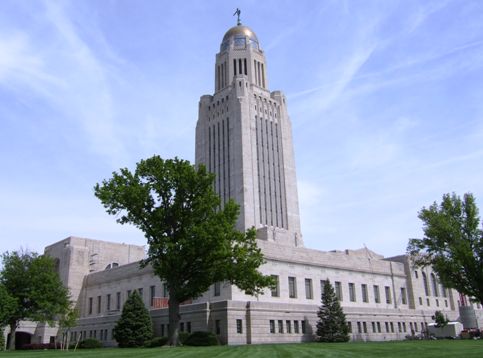 |
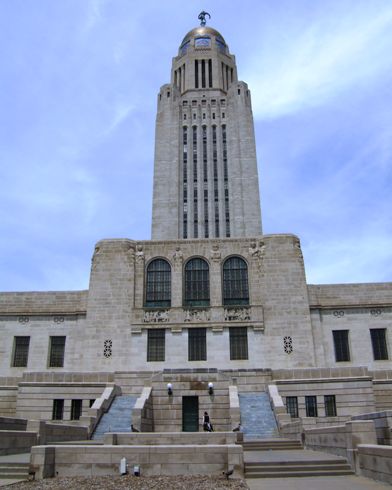 | .However
it is an imposing building with a huge 14 storey central tower with a
classical statue of a farmer sowing seed on the top reminding us this is a
grain state. The building is made of Indiana limestone and was constructed
in stages as the money became available from taxes, thus enabling it to be
completed without the use of loans. Its total cost was $10 million |
| The statue of the sower
scattering seed is perched on top of the richly decorated rotunda 400ft
high. The figure itself is 19½ ft high
and stands on a 12ft sheaf of corn. It weighs almost 9½
tons. A major refurbishment of the building has almost been
completed. The 14th floor observation deck can just be seen at the bottom of
this photo. | 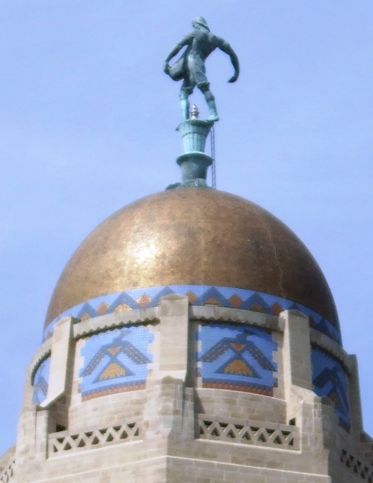 |
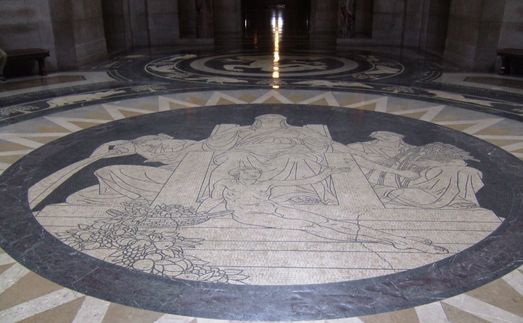 |
Down at ground level the marble mosaics on the floor represent the Earth as
mother providing food, water and agricultural riches. |
| Further out are images of
dinosaurs which once roamed the plains and can still be found in many fossil
beds. | 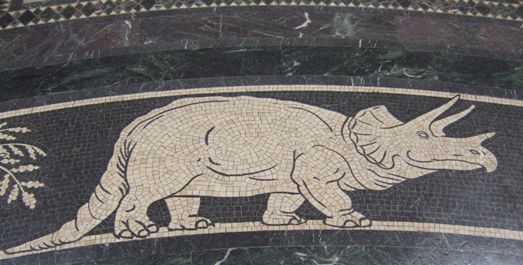 |
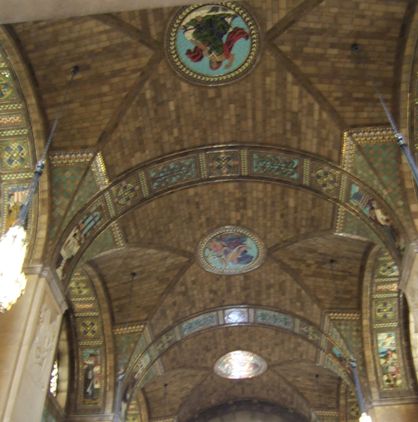 |
The ceilings in the vestibule and foyer are very richly decorated as they
arch majestically above. All the pictures on the ceiling and walls have some
symbolic meaning. We joined a tour primarily consisting of 15 year old
school kids which turned out to be very informative and well listened to.
They were obviously from elsewhere in the state because the comment was made
that where they live there are more cows than people and so one state
senator looks after several counties (each senator represents 38,000
people). |
| The walls are also
covered in symbolic paintings. Most of the art was by one painter and most
of the sculpture also by one artist. | 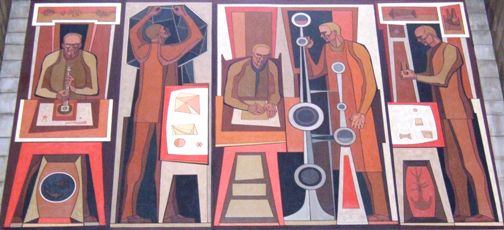 |
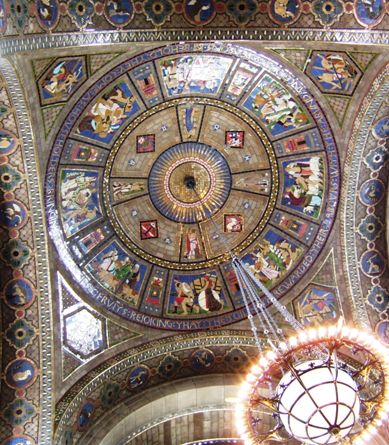 |
Another view of the ornate ceilings which seem to be everywhere on the main
floor. |
| There are numbers of
bronze busts of people who have contributed to the development (political,
commercial, artistic, etc) of the state and therefore been elected to the
Nebraska Hall of Fame (but you have to have been dead for 20 years). This is
Red Cloud, an Ogallala Lakota leader, warrior and statesman (1821-1909). | 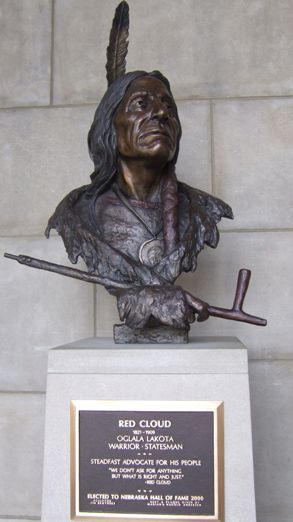 |
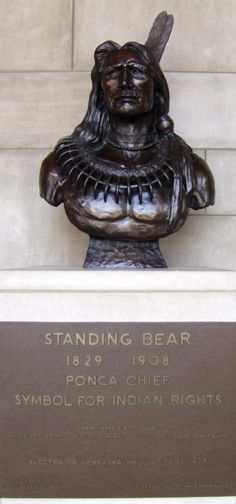 |
Another Indian, Standing Bear, a Ponca chief (1829-1908) who successfully
sued the US to establish that "an Indian is a person within the meaning of
the law". This was the beginning of the Indian's fight for human rights. |
| Susette Laflesche Tibbles
(1854-1903) was an Omaha Indian known as Bright Eyes who was a speaker and
writer for Native American rights. She was the interpreter at the court
cases involving Standing Bear. | 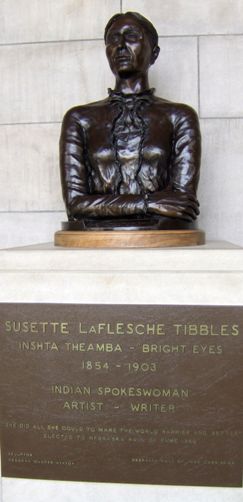 |
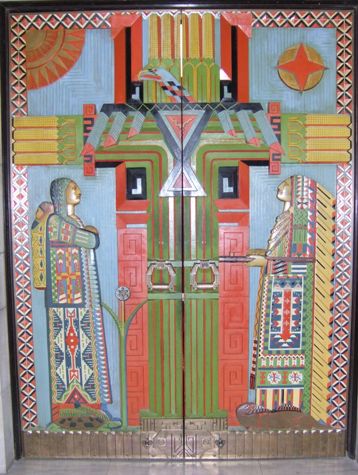 |
These huge wooden doors lead into the Nebraska senate chamber, and again
show a great deal of symbolism from the state's Indian heritage. The chamber
is no longer used for its original purpose as Nebraska, unique in the US,
has a unicameral legislature, which sits in the opposite chamber. There are
49 members. It is also non-partisan in that the senators are elected by name
and not by party, and the legislature's officials are elected from within
the group regardless of party. The senate only meets for about 75 days per
year on average. |
| .The ceiling of the
senate chamber, with scenes depicted in the panels. | 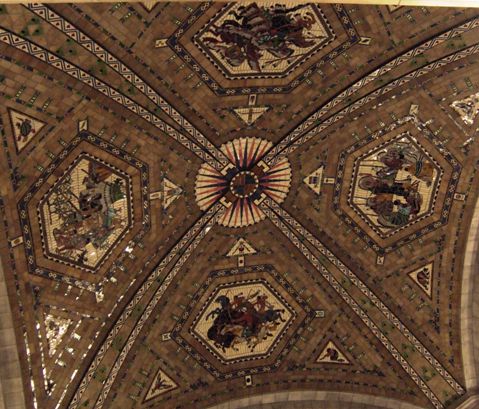 |
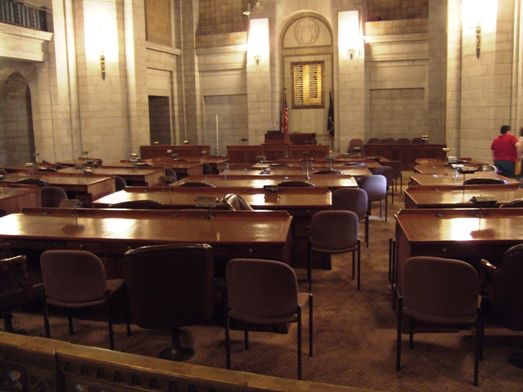 |
The senate chamber floor. There are more chairs these days because the
chamber is now used for other hearings. |
| The state supreme court,
which is a court of appeal. | 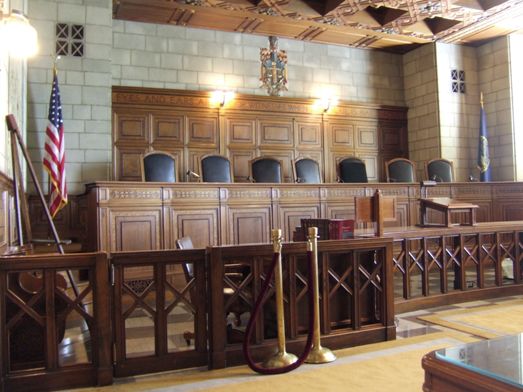 |
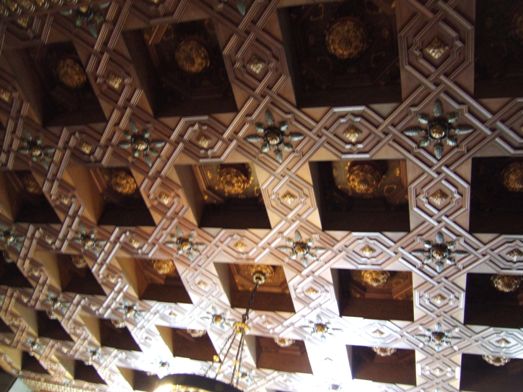 |
The acoustics of the chamber are very good, partly due to the acoustic
blocks used in the walls, and partly to the design of the ceiling. |
| One of several tapestries
on the walls which also help with the acoustic qualities of the room. | 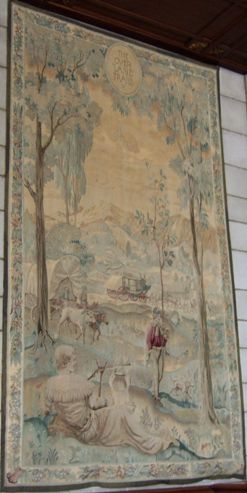 |
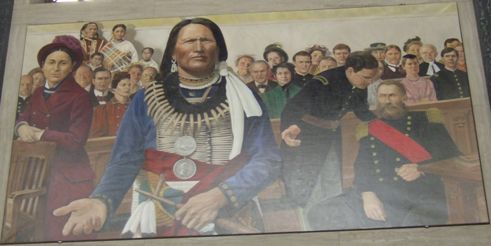 |
One of the paintings on the wall showing scenes from the court in the early
days. |
| After the tour we went up
the tower to look at the views. You can see for miles on a clear day because
Nebraska is flat! The large house with pillars in the bottom right is the
governor's mansion - he only has to walk across the road to go to work (but
he has to surrender his driving licence when elected - presumably for
security reasons). | 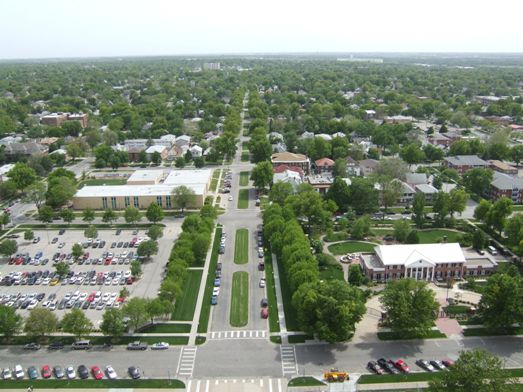 |
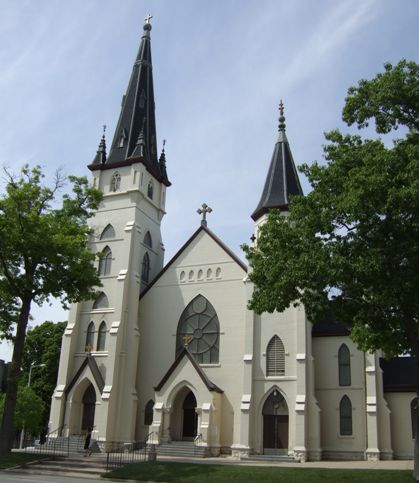 |
One of the several churches just across the road from the state capitol.
They all look modern and well patronised showing that religion is still a
significant force in these conservative mid western states. |
| We travelled a short way
to visit some gardens mentioned in the guide books. These are the 'Sunken
Gardens', a tranquil corner next to a major road intersection. It has not
really come into bloom yet, and many beds are still awaiting their summer
plantings. | 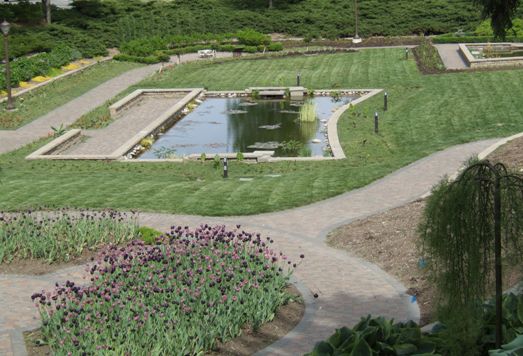 |
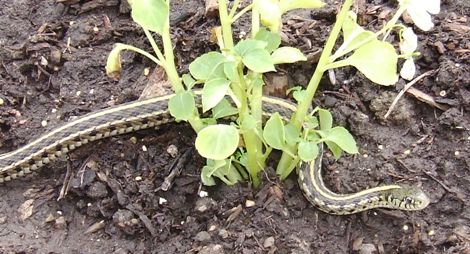 |
We did spot this snake curving along the path and then onto the earth where
it became very still while waiting for us to leave. |
| Less bothered by our
presence was this rabbit, avidly consuming all the dark leaved plants which
the gardeners had just planted, probably only hours before. They aren't ever
going to flower! | 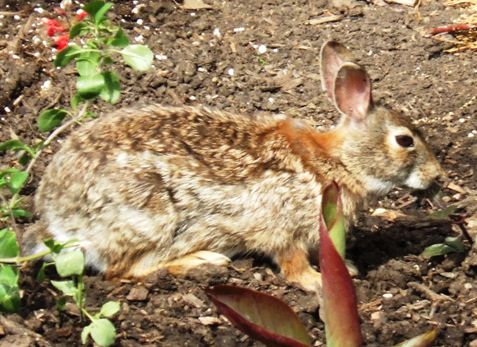 |
|